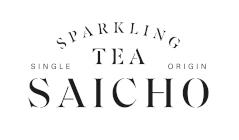These diseases, which are widespread in vineyards, are thought to be due to a complex of different fungi that enter the vine through wounds, mainly during winter pruning or shoot thinning in the springtime and develop inside the wood, causing necrosis and decay.
The incidence of GTD is highly variable, depending on the year, the cultivar, the age of the vineyard, the pruning type and training system, and the climate. But even in the same region, in the same year, and with the same cultivar and age, there are still big potential differences between vineyard plots. This incited a team of researchers in the south-eastern Mediterranean wine regions of France (Sud and Occitanie) to explore why this could be and to see if vigour plays a role.
And does it?
Apparently, it does. After studying about 90 commercial vineyard plots growing Grenache Noir with similar ages in three different areas (in the Bouches-du-Rhône, Gard and Vaucluse departments) over two growing seasons (2022 and 2023), the results showed: “When the vigour is very low, there is only little to no GTD expression and that the highest rates of GTD incidence were always associated with high vigour, even if high vigorous plots can also show little GTD incidence.”
So the researchers concluded: “Current season vigour is positively correlated with the GTD incidence rate in most of the network/year scenarios. The relationship shape suggests that, while low to moderate vigour is consistently associated with reduced symptom expression, high vigour can be correlated with either high or low expression which implies the involvement of additional factors. In one instance, previous year water stress indicators were the ones most correlated with current year GTD incidence, though vigour was also influential. For the plots where GTD expression was greatest, the previous year’s water stress was combined with the current year’s substantial spring vigour.”
These findings support some anecdotal evidence of grapegrowers who have noticed, for example, that vines growing at the top of the hill, near a border of competing trees, were less vigorous and showed fewer symptoms of GTDs – such as “tiger stripe-like” pattern on leaves – than those lower down the slope in richer soil and further from competition.
Are there any other studies that support these findings?
Surprisingly, this is a connection that hasn’t been studied much before. However, some scientific references on the influence of vigour exist:
- 2004 to 2006, Destrac-Irvine et al (2007) monitored a network composed of 22 vineyard plots located in different sub-regions of Bordeaux. They observed that, besides an overall decrease in GTD expression in the driest year (2005), the incidence of GTDs in a given year was higher in plots with a higher water holding capacity, comfortable nitrogen status and yield.
- In a long-term trial comparing different ground vegetation cover and N fertilisation combinations in the Cognac region of France, Dumot (2022) assessed mortality rates after 20 years of study. Treatments consisted of vineyard blocks with different doses of fertilisers combined or not with levels of ground vegetation cover. Mortality, caused mainly by GTDs, was highest in the treatment with higher fertilisation (60 N unit per ha) and no ground vegetation cover and was lowest in the non-fertilised block with ground vegetation cover.
- Kuntzmann et al (2013) investigated the role of a set of cultural factors in explaining the expression of Esca or Botryosphaeria dieback on a network of plots of different cultivars and ages monitored between 2003 and 2011 in the Alsace region. Among the different significant factors that were pointed out, these authors mentioned vigour and yield were frequently associated with higher expressions of GTDs, even if they also point out discrepancies with other studies and years where higher GTD expression was associated with lower vigour.
- Three recent studies included vigour and their related variables among the factors tested for their influence on GTD expression. Hofstetter et al (2025) showed that on a network of plots of the same cultivar (Gamaret), age and planting material origin, set among four Swiss wine-producing regions, the variables most correlated to GTD incidence were climatic variables (especially rainfall in May and June) and soil water holding capacity; vine vigour being not significant, though showing a slight correlation with GTD symptom expression and vine mortality, more pronounced in certain years. In the study conducted by Gastou et al (2024), consisting of 46 cultivars in one vineyard plot in Bordeaux in which monitoring was done on epidemiological and biotic variables (vine vigour, nitrogen and δC13 indices, phenology), water use efficiency of the cultivar, and to a lesser extent vigour, proved to be both positively correlated to Esca incidence and mortality. Finally, Dell'Acqua et al (2024) showed that a decrease in Esca foliar symptom incidence was associated with a low level of nitrogen fertilisation compared to a medium level, whereas a high level did not significantly increase disease expression on potted Sauvignon Blanc uprooted from two Esca-affected vineyards in the Bordeaux region, monitored during three years.
What does this mean?
Grapevine trunk diseases, like Esca and Botryosphaeria dieback, are complex diseases. While cultivar, climate, age, and pruning system are known contributors, they do not fully explain the variability in GTD incidence. The new study suggests grapevine vigour and its primary drivers (such as water and nitrogen status, weed cover, production, and vegetation biomass) could also be a factor in GTD foliar symptom expression. But these results need to be confirmed over a longer period, in more regions and with other cultivars.
Until then, what is the suggested solution?
For vigorous plots showing a high incidence of GTDs, you could try growing cover crops during winter and spring, as well as managing N fertilisation, as those two practices are known to reduce vigour. However, it should be noted that vigour reduction is frequently associated with yield decrease, and you would have to ask yourself if the trade-off is worth it.
Where can I read the study that suggests a connection between grapevine vigour and GTD?
The study by Marion Claverie, Maïko Audras, François Berud, and Didier Richy was published in OENO One (Vol. 59 No. 1, 2025). The study is called ‘Grapevine vigour: A critical factor associated with trunk disease symptom expression’ and you can find it here.

 English
English French
French







.png)


